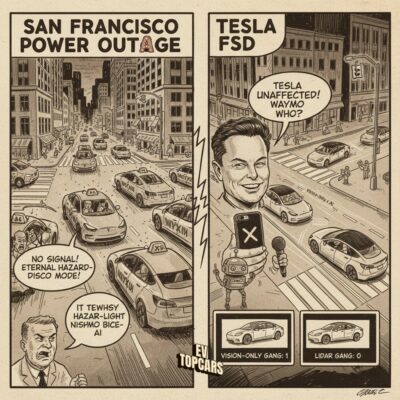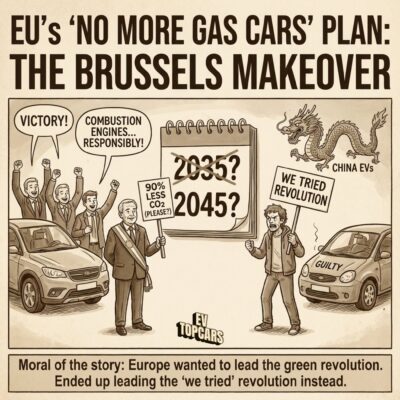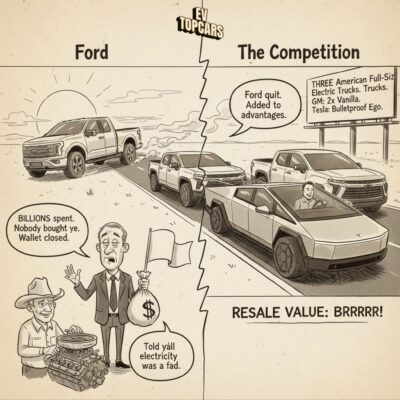Every time a company takes its first steps onto a major
stock exchange, it marks a pivotal moment in its journey. This debut, commonly
referred to as an Initial Public Offering (IPO), can shape the company’s
trajectory. With the electric vehicle (EV) sector booming, the stock market
debuts of EV companies hold added significance. The rise of Tesla and its
subsequent IPO in 2010 set a benchmark. Fast forward to today, and VinFast’s
Nasdaq debut is creating similar waves.
Background on VinFast
Emerging from Vietnam, VinFast has quickly established
itself as a formidable player in the EV market. Founded in 2017, the company
managed to launch its first car in record time, turning heads with its
innovative design and robust features. Prior to its Nasdaq debut, VinFast
reached significant milestones, including the launch of three smart EV models
and a strong push for international market presence.
In the last couple of years leading to its Nasdaq debut,
VinFast’s vision of global expansion became evident. The company invested
heavily in research and development, further fortifying its position as a
leader in the EV space, especially in Southeast Asia.
Background on Tesla’s IPO
Back in 2010, Tesla, led by the enigmatic Elon Musk, took
its first step into the stock market. At that point, Tesla wasn’t the household
name it is today. Their primary offering was the Roadster, a high-performance
sports car with an electric heart. However, with grand visions of affordable
EVs for the masses, Tesla aimed to fund projects like the Model S through its
IPO.
Financially, Tesla sought $226 million from its IPO, pricing
its stock at $17 a share. The vision and promise of a revolutionized auto
industry captured the interest of many, setting Tesla on a path to become an EV
behemoth.
Comparing the Two Debuts
Timing
When Tesla entered the stock market scene in 2010, the EV
sector was still in its infancy. Many investors and consumers viewed electric
vehicles as an intriguing novelty, but there were significant doubts about
their long-term viability. Traditional gasoline vehicles dominated the streets,
and infrastructure to support EVs, such as charging stations, was limited.
In stark contrast, VinFast’s debut came during an era where
electric vehicles were not only established but also rapidly gaining ground.
Climate change concerns, technological advancements, and favorable policies
created an environment ripe for EV expansion. The world was not just warming up
to EVs but actively seeking them, providing VinFast with a golden entry ticket.
Financials
Tesla’s 2010 IPO saw them raise a substantial $226 million,
indicating investor trust in Elon Musk’s vision of an electric future. Despite
their ambitious plans and relatively nascent presence in the market, Tesla’s
promise of innovative electric vehicles for the masses captivated investors.
By the time VinFast decided to step onto the Nasdaq, the
electric vehicle landscape had dramatically evolved. The company entered the
scene with robust financials, a clear growth trajectory, and a heightened
market valuation. The financial muscle and backing they showcased symbolized
the industry’s growth and the heightened investor confidence in the EV space.
Company Maturity
At the time of its IPO, Tesla’s portfolio boasted the
Roadster. While it was an impressive vehicle, the company’s future plans — such
as the Model S — were still in conceptual phases. The promise was there, but a
lot was riding on future innovations and market reception.
VinFast, conversely, approached their debut with a more
diversified portfolio. The company already had multiple EV models on the
market, a testament to their aggressive research and development strategies.
This maturity not only reflected VinFast’s preparedness but also the evolution
of the EV industry over the past decade.
Public Sentiment
Tesla’s entrance was met with a mix of enthusiasm and
skepticism. While many were excited about the potential revolution in the
automotive world, others questioned the practicality and sustainability of EVs.
The media landscape was rife with debates, speculations, and projections about
Tesla’s fate.
Fast forward to VinFast’s debut, and the narrative had
changed. The public, now more educated about and accustomed to EVs, viewed such
debuts with less skepticism. VinFast enjoyed a generally positive reception,
demonstrating a broader acceptance and understanding of electric vehicle
technology.
Learn More: Tesla Sweetens the Deal: Price Cuts, Free Paint, and No More Standard Range for Model S & X!
Implications for the Future of EVs
The Continued Rise of EV Companies
VinFast’s successful debut, following in Tesla’s footsteps,
reinforces the global momentum behind electric vehicles. As each new player
enters the market, they bring unique technologies, visions, and strategies,
making the industry richer and more diverse. This proliferation of EV companies
indicates a maturing industry, one that’s increasingly attracting the attention
of investors, innovators, and consumers alike.
However, the rise of EV companies also suggests potential
challenges. With more players vying for market share, competition intensifies.
New entrants must differentiate themselves, whether through innovative tech,
customer service, or unique selling propositions. As the market saturates, only
those offering genuine value and innovation will thrive, ensuring the industry
remains dynamic and forward-moving.
The Global Perspective
While Tesla’s success underscored the appetite for EVs in
Western markets, VinFast’s ascent highlights the global demand for electric
transportation. Regions once dominated by conventional automobiles are
undergoing electric transitions, suggesting a universal shift in automotive
preferences. As different parts of the world embrace electric vehicles, we can
expect a wider variety of models tailored to specific regional needs, from compact
urban EVs in crowded cities to rugged electric trucks for varying terrains.
This global perspective also brings forth challenges,
especially around infrastructure and policy. Charging infrastructure,
regulations, and incentives vary across regions. Companies will need to
navigate these complexities to ensure their vehicles are accessible and
appealing to different demographics, requiring collaborations with governments
and local bodies to streamline the EV adoption process.
Innovation & Technology
The progression from Tesla’s Roadster to VinFast’s smart EV
lineup showcases the leaps in technological innovation over a decade. As
companies compete for market share, the impetus to innovate grows, driving
advancements in battery technology, autonomous driving features, and vehicle
performance. With each innovation, electric vehicles become more efficient,
affordable, and appealing, pushing the boundaries of what’s possible.
Yet, with rapid innovation comes the challenge of
standardization and safety. As companies race to introduce new features,
ensuring these innovations are safe, reliable, and user-friendly is paramount.
Additionally, there’s the challenge of making technology accessible. Companies
must strike a balance between cutting-edge tech and affordability to ensure the
broadest possible audience can benefit from these advancements.
Learn More: VinFast’s New US Factory Fuels the Electric Vehicle Revolution
Conclusion
From Tesla’s pioneering IPO to VinFast’s confident Nasdaq
debut, the journey of EVs in the stock market mirrors their journey on the
roads. As these companies surge ahead, breaking barriers and setting
benchmarks, the world watches, eagerly awaiting the next leap in electric
mobility. For investors, consumers, and enthusiasts, the electric future looks
promising.











VinFast’s New US Factory Fuels the Electric Vehicle Revolution
Tesla Sweetens the Deal: Price Cuts, Free Paint, and No More Standard Range for Model S & X!